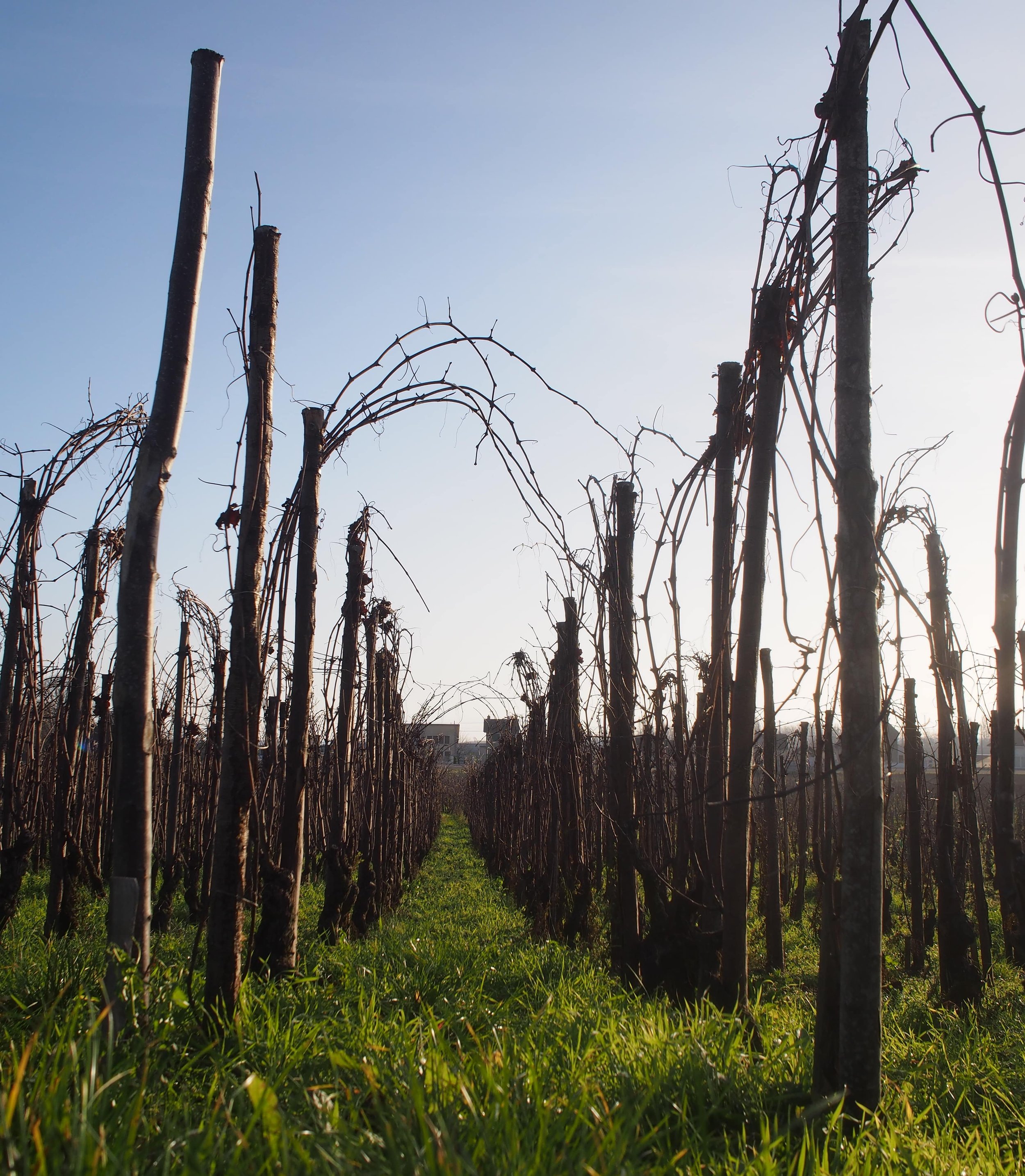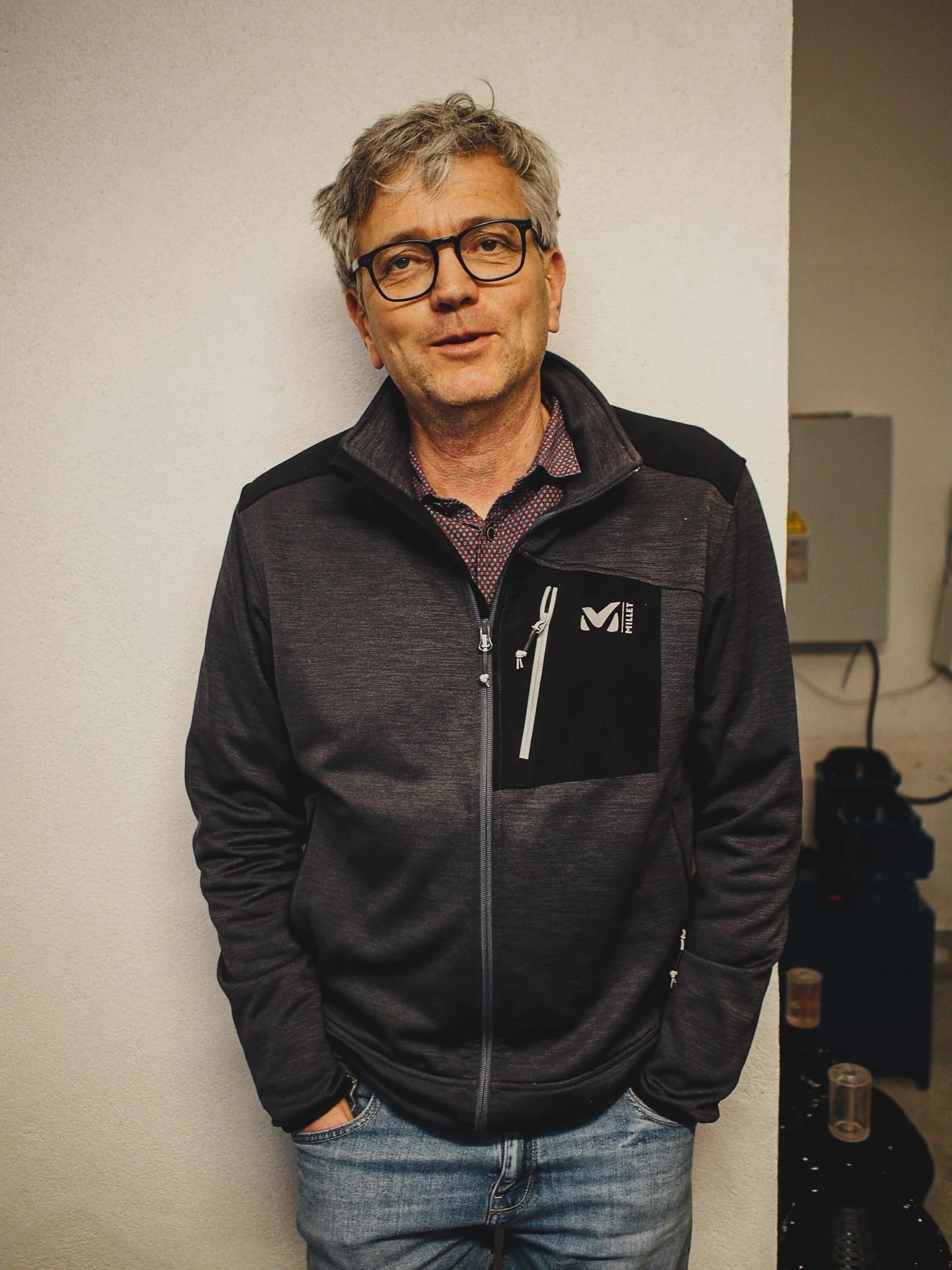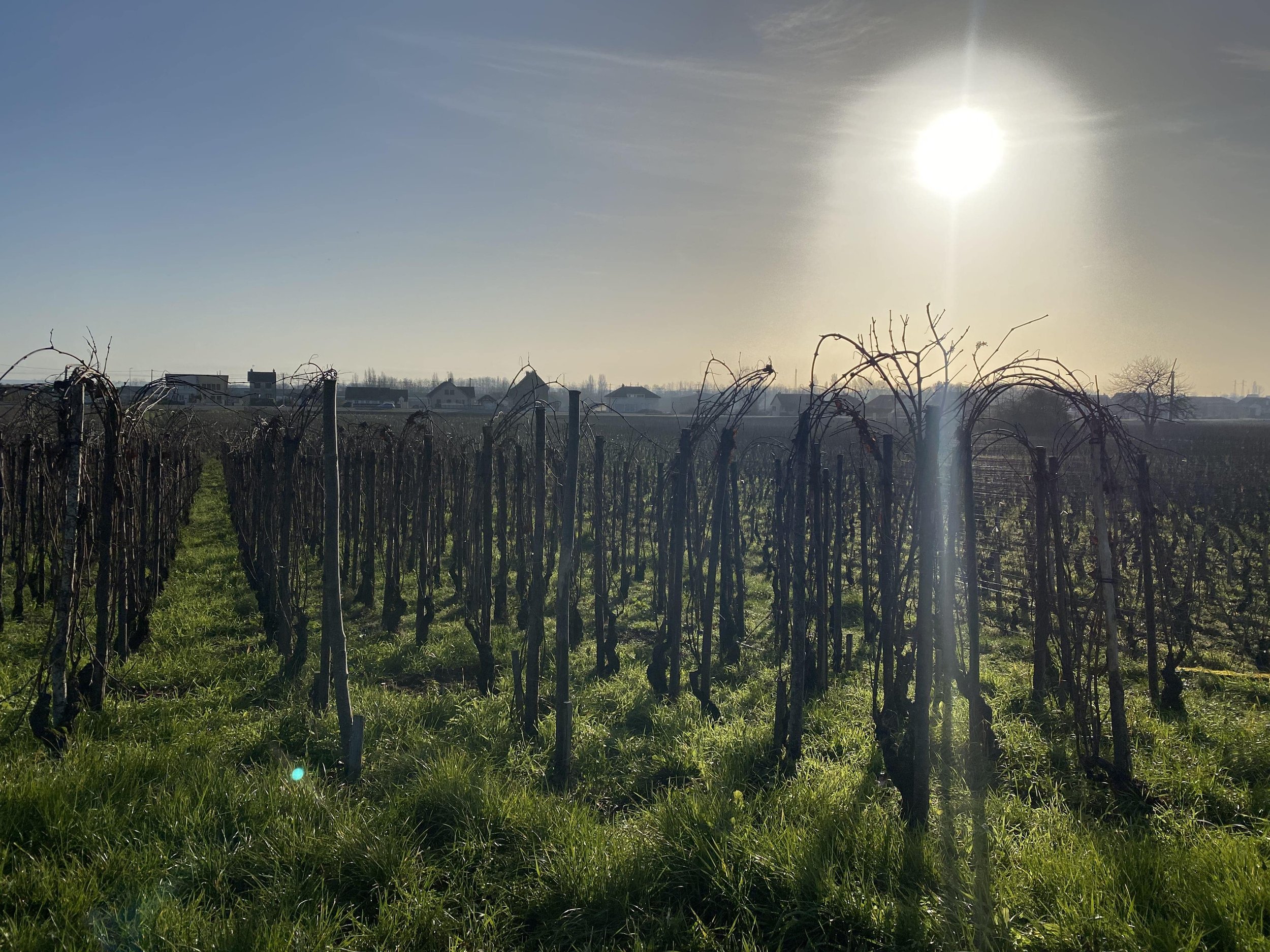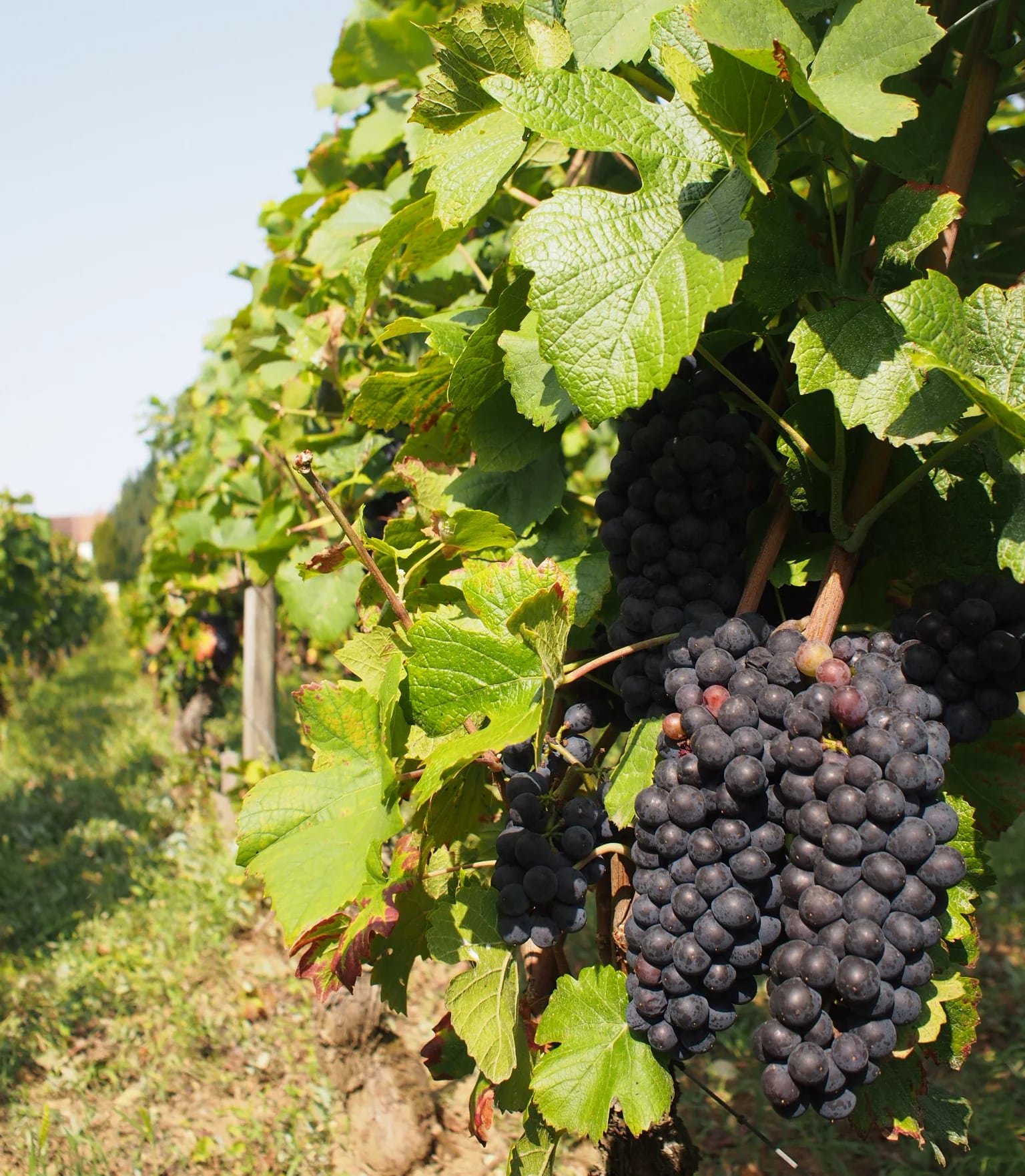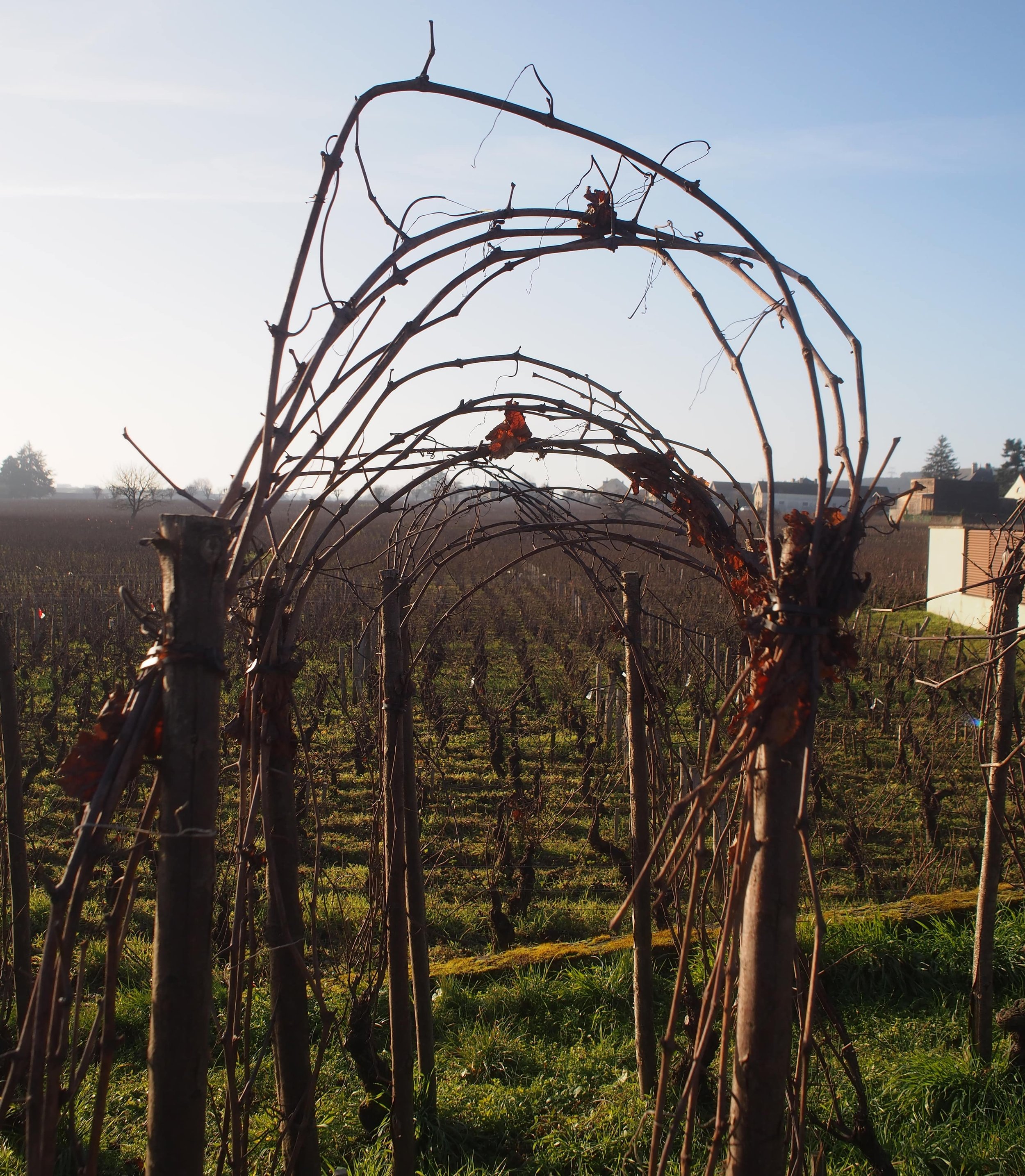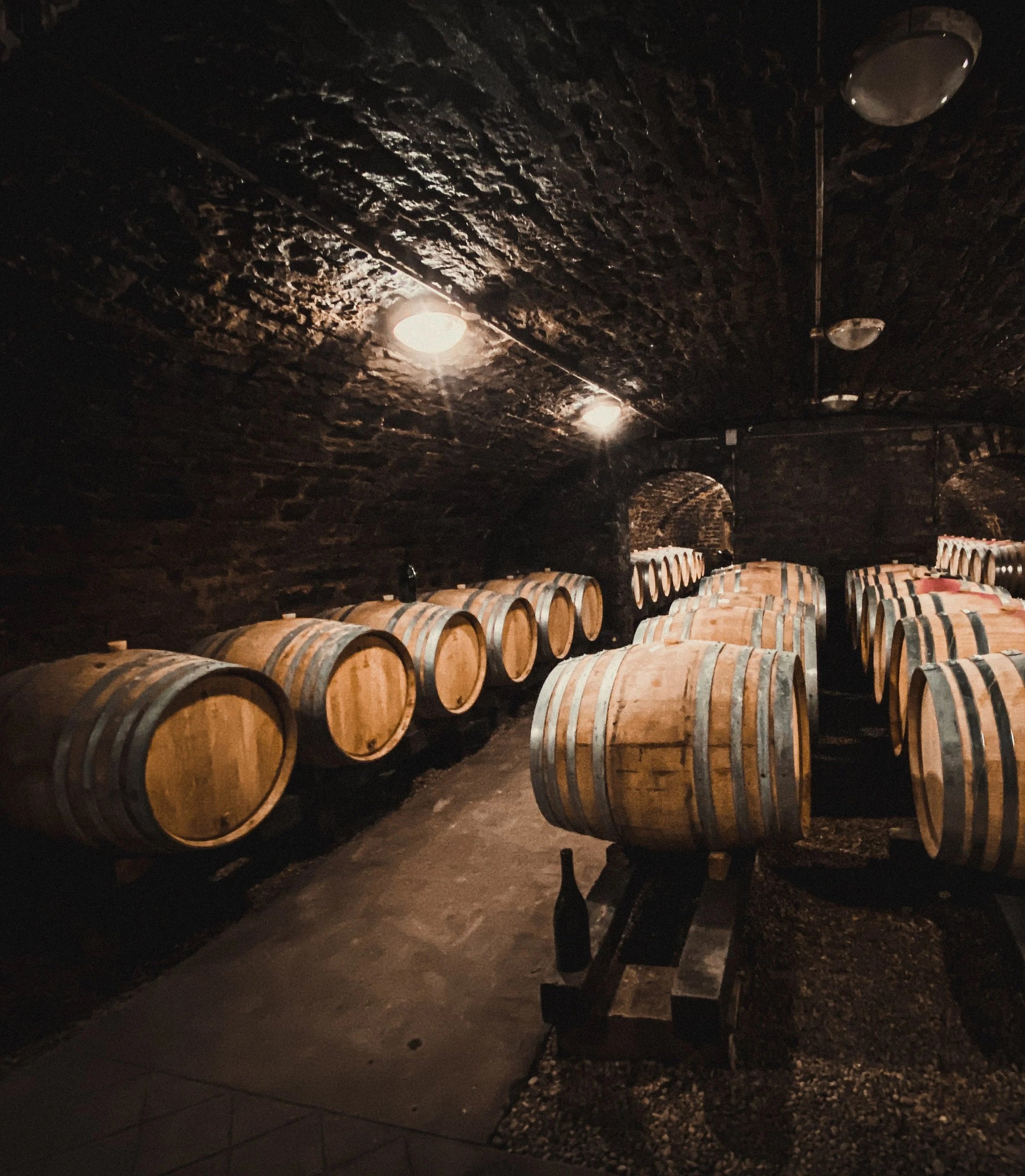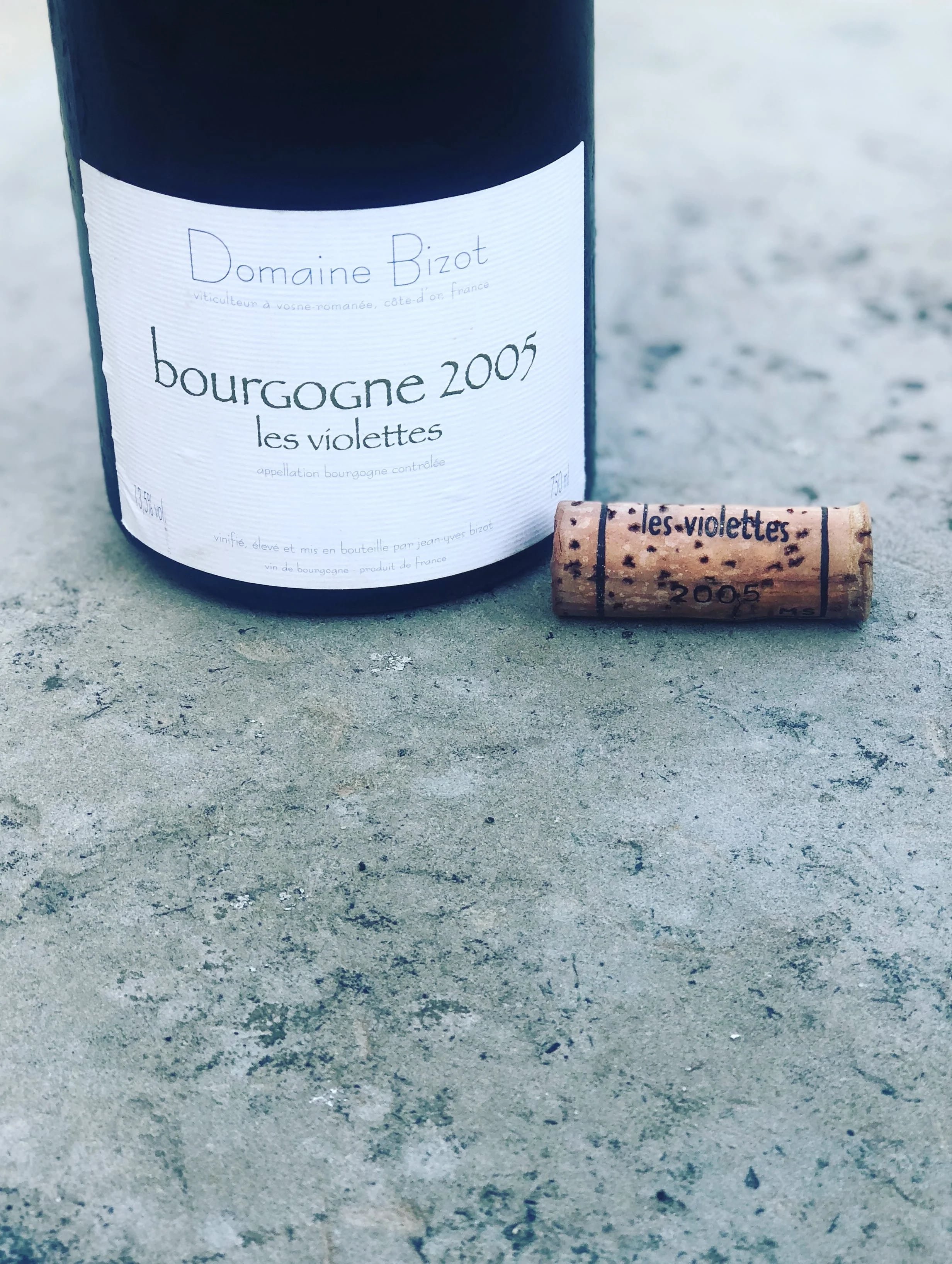Jean-Yves Bizot
The vineyards of Vosne-Romanée create some of the finest wines in the world, but Jean-Yves Bizot’s winery is as understated as it gets. It has undergone little change since the time of his grandfather, and there’s no luxury sign or fancy gates: it just looks like your regular French countryside townhouse, because that's exactly what it is.
It just so happens that the man who resides here makes some of the most compelling and heart-tugging expressions of Pinot Noir, but they are wines of subtlety and emotion. Just as his house isn’t fancy, his wines aren’t made to be fancy either. They are wines that are born from Jean-Yves’ experimental spirit: from going against the status quo, and instead by following his instinct.
Meet Jean-Yves
The wines of Bizot have risen to dizzying heights in recent years. They have become so sought-after that even if you want to find a bottle you might not be able to: they have reached mythical status. If it weren’t for the fact that we’re standing with Jean-Yves right here in his tiny, humble underground cellar, next to where his single barrel of the white parcel “Les Violettes” stands, we might think it was an actual unicorn wine: one that only exists somewhere far away in an alternate universe.
For somebody whose wines have risen to such dizzying heights of wine stardom celebrity status, Jean-Yves embodies the polar opposite of any personality trait you might consider tied to fame. He has absolutely no air of self-importance: instead he is quiet and contemplative; actually rather shy. His eyes also don’t light up when discussing fine wine or the notion of terroir. Instead, they light up as we chat about the importance of personal evolution, and when discussing solutions in the vineyard for the ever-pressing matter of global warming.
We walk with him across the road to see a plot of his vines. They have been trained to an ancestral method that’s so drastically different to what has become the norm in Burgundy: seeing it next to its neighbour is like the vineyard version of chalk and cheese. This, however, is where Bizot smiles and where his words get even faster than normal - he is so excited that he speaks at a million miles an hour. As he notes our own excitement at the prospect of something so groundbreaking, he simply bows his head and shuffles a little from side to side, and says simply,
“As human beings, we’ve forgotten how to let the vine be. The vine doesn’t want to be annoyed. We are in a time where we need to do less.”
Jean-Yves didn’t set out with the intention of becoming a winemaker. In fact, he studied geology at university.
“Geology interested me. I like rocks. I did little jobs here and there with it, but it was a complicated time in the 80s to get jobs. Many geologists went into IT - that was a common route - but I wasn’t interested in technology. Wine was more interesting to me than computers.”
So Bizot found himself back at school, this time studying enology. Here, however, he quickly discovered that he learnt more about what one should not do, than about what one could do. He remembers,
“I learnt a lot of things that have no relevance to the wines I make today. What struck me while taking my degree was this culture of fear that exists in enology. They were afraid of everything: powdery mildew, downy mildew, hail, frost… scared of things that can go wrong in fermentations… always afraid. You blame yourself all the time. That was what I struggled with the most - integrating that fear into my reasoning. I couldn’t do that.”
He describes a specific class he remembers clearly: where they were taught that you should always destem, or you’d risk bacterial problems such as volatile acidity, and that it wasn’t possible to make wine without sulfites. Then, they were shown examples of what could go wrong. SO2 was central to fixing problems.
Something didn’t seem right to Jean-Yves.
“Sulphur solution only became industrially commercialised in the mid 1960s here… I was drinking the wines of the 70s and the 80s and I didn’t like them. There was a strange meatiness about them - like pâté - something I didn’t find pleasant. In the wines from before this era, you didn’t get those aromas or tastes. I started to ask myself - why weren’t they like that before? Was it chemicals, technology or the generational shift that occurred in the 70s?”
It’s not, however, quite as simple as just being a case of SO2’s prominent arrival on the scene. He tells us that the 70s and 80s also saw the arrival of agricultural machines - both in the vineyards and in the cellars. Mechanisation was further facilitated by sulfites: intense machine pumping of the wine was made possible as the wine was protected by the sulfites. It had become a vicious cycle. In the meantime, the 80s represented a climatic nightmare for the region due to rot, which sulfites were also used to cover up. He believes that a combination of these factors resulted in the overall wine quality suffering throughout the region.
He had reached the decision that adding sulfites was not the solution.
“I had to forget all the things I had been taught at school: you can’t stick to what you’ve learnt if you want to work differently. You have to trust yourself.”
Jean-Yves returned to the domaine in 1993, where he worked with the winemaker who had previously been making the wines for a couple of years, as his father was a doctor and had rented out the vineyards.
“I began making wine just like everybody does - as a novice. In 1993, we used sulfites, but in 1994 I used a bit less, and in 1995 less again. Then, I just kept making the doses smaller and smaller, until I made my first vintage without any sulfites at all in 1998.”
It was a gradual learning process for Jean-Yves: nothing is ever rushed here.
“It’s not a question of just saying “I’ll Stop!” -- It’s more a question of putting everything you’ve learnt behind you. All of the winemaking directions I was taught at school involved sulfites, so I had to find my own new path...”
The Vineyards
Jean-Yves’ vineyard holdings* consist of just three and a half hectares, a micro-estate nestled amongst the big guns. Two and a half were passed down from his grandparents, here in Vosne-Romanée and in the grand cru of Echezeaux. Later, he purchased more northerly parcels in the lieu-dits of Le Chapitre and Clos du Roy, just a stone’s throw from Dijon. Clos du Roy was in fact the house wine of Louis XV, but the vineyards of this area fell into disarray in a post-phylloxera post-war world. Recently they’ve been nurtured back to life in the hands of caring growers who fervently believe in their potential, such as Bizot, Sylvain Pataille and Marc Soyard.
In Vosne-Romanée, he has villages plots in the lieu-dits Les Réas, and Les Jachées, as well as across the road in another villages designation: where the experimental arches are located. In the Echezeaux grand cru, he has plots in Les Treux and Les Orveaux. Depending on the year, Les Treux is occasionally declassified to create a Vosne-Romanée premier cru: something that others might call crazy, but that doesn’t faze Jean-Yves. He also has two white vineyards: one in the Hautes-Côtes, and a small parcel called Les Violettes, which due to labelling laws appears as Bourgogne blanc: the region’s entry level wine, but in fact it borders the grand cru, Clos de Vougeot. It’s only tiny, and despite this area being renowned for Pinot Noir, it has always been planted to Chardonnay, and historically it was actually a garden. The soil here is a little different: very sandy, on top of pink conglomerate.
Working in the vineyards was also a personal evolution. When he took them over, he continued the work in the way it had been done before, via the lutte raisonée approach. However, by 1998 he had decided he didn’t want to use any chemical products, because they were killing the beneficial insects that he needed in the vineyard to eat the red spider mites. He had a short return to synthetic sprays due to extreme powdery mildew pressure in 2004, but returned to organics in 2006.
By 2007, he had sold his tractor, and now he will only plough gently once a year, disturbing the soil as little as possible.
In Burgundy, downy mildew is a particular concern . In organic viticulture, so far the only application that is deemed reliably effective is copper: but copper, in large quantities, also poses problems of soil toxicity.
Jean-Yves, however, is making impressive strides with the optimistic hope of being able to eliminate copper entirely in two years’ time.
“It’s been a long gentle shift. The goal is to no longer use copper at all. Last year [2019] I reduced my use all the way down to 900mg per hectare [this is around 3x less than the norm in the region]. I’ve been using it together with natural stimulants that are produced from algae, which should prevent the vines from getting too stressed. These algae also stimulate the vine’s defense mechanisms, a little like boosting its immune system.”
He has also begun working with teas in the vineyards to see if they can help in tandem with the algae. He also thinks that preparations made from milk, known in France as ‘petits laits,’ might help the battle against powdery mildew, but he has had colleagues who accidentally burnt their vines by using it in combination with sulphur. Although they are both natural, together they can be “explosive.” He says,
“It could be a solution and it could be commercialised. We just need to understand these products better - we should study them and learn about them.”
He adds,
“And for any treatment, you have to believe in it, no matter what it is. If you don’t, then it won’t work. You also need to be an optimist and say ‘great, I saved 70% of my harvest,’ not ‘I lost 30% of my harvest…’”
This optimism is something he also upholds when it comes to his low yields. Depending on the vineyard, the average yield for Burgundy sits somewhere between 35 and 50 hectolitres per hectare. At Bizot, it’s more like 25hl/ha - and that’s in a good year - as Jean-Yves employs a short pruning method for quality purposes. In 2016, some of his plots were down to only 9hl/ha due to the chaotic weather. We now understand why demijohns are tucked in every nook and cranny: every little drop counts, and barrels are often not small enough for the small quantities.
But as ever, Jean-Yves won’t let fear get in the way. The fear of low yields doesn’t stop his quest for healthy vines and quality wines. For Jean-Yves, a pivotal moment in the Bizot domaine evolution was when he decided to stop trimming the vines - also known as hedging - and instead letting the tip of each shoot, the "apex," continue its natural growth cycle. He says,
“I used to do the same as everybody else - I’d cut the vines, never asking myself the question: why? In 2002, I planted a new vineyard in the Hautes-Côtes. As I was planting, I started to ask myself the question of how I was going to cultivate these young vines, because I didn’t have a certain idea in my mind. I read that it was recommended to *not* cut them, as they’d have more carbohydrate reserves and a better vegetative cycle. I thought that was strange - why is this the case for the young vines and not for the older?”
The thought kept returning to him, so he began letting the vines grow higher and higher, until he decided there would be no difference if he cut a little bit less here or there:
“Now, for me, it’s just a question of not cutting, so that the plant can grow completely naturally.”
As Jean-Pierre Frick also outlines, Jean-Yves believes this allows the plant to better self-regulate. In a region that is getting hotter and hotter every year, alcohol levels are also climbing, and some growers in 2018 experienced wines that were pushing 15% ABV. For Pinot Noir, which finds its excellence in its delicacy and finesse, this is bad news. Jean-Yves believes that the answer lies in the way the vine is farmed. He says,
“As winemakers, all the agricultural practices we have are also economical practices. The idea of trimming the vine is to get bigger berries, bigger bunches, bigger yields. There’s a competition between the growth of the vine and the growth of the berries. But then there are less leaves when the harvest time is approaching, so that blocks maturity. So - don’t cut too much, or too late. But when you don’t cut the vine, you no longer need to ask yourself these questions, as the vine is growing and the berries are growing, so we just have smaller berries, smaller yields, but this is more interesting.”
He has also begun to change his method of vine training on one plot: to lift the vines further off the ground, and to grow them on sticks, which he tells us was the ancestral method in Burgundy, before the wire was introduced in the 20th century. The sticks were known as paisseaux. By using them, he hopes to increase air flow around the vines, thus decreasing disease pressure, and he hopes that the added canopy shade will mean the grapes don’t suffer from the summer heat spikes that are becoming so common in the region. Back when the wire was first introduced in the early 1900s, the grapes needed the bonus of additional sun for ripening, as this part of the world was much colder that it is now. Today, they have the opposite problem. He also likes the idea of getting rid of the wire, as he believes that the metal used to produce the wires is not entirely neutral.
The results are also proving interesting. The berries and tannins are ripe, and his wine was 13%, not the aforementioned 15%. The plant also appears to be more stable; it doesn’t seem to make a difference if he harvests a little early or late; the sugars are not subject to sudden change.
“Maybe I’ll have a different idea in 20 years’ time, but for now this is a solution.”
The Wines
Jean-Yves’ grandfather had made wine in a very simple manner: largely without SO2, as back then it was not widely commercially available, and mainly with whole bunches.
When it was his turn to start his own winemaking path, it was during the peak of the fashion of destemming Pinot. Henri Jayer, one of the most famous winemakers of all time, who passed away in 2006, was one of the driving forces behind this style. Jean-Yves remembers,
“Henri lived just down the road. For him, destemming was the ABC for making a grand vin… we had many discussions about that…”
Jean-Yves didn’t change his mind, however, choosing to continue working with whole bunches. Today, this has become common practice in Burgundy, and whole bunch fermentation has become popular across the world.
When using whole bunches it is important to ensure the whole bunch is healthy. When destemming, this is easier, as you can assess berry by berry. This means that Jean-Yves and his team are extremely careful when sorting the bunches in the vineyard: it can take a couple of minutes to check just one bunch. This is crucial when working without sulfites to ensure no rot makes its way into the vat.
The bunches then arrive at the winery, and are crushed gently by foot, leaving a large portion of berries intact. The wine is then left on its own to do a carbonic maceration for five to six days, with no pumping over. Fermentation then begins, and the wine is left for a total of around 11 - 15 days, after which it is pressed and drawn into the barrels via gravity through a hole in the floor (the ceiling of the cellar), and left to finish its fermentation in barrel.
“I listen to the grapes and decide. I taste the juice, and when I feel it tastes good then I put it into barrel. I don’t want to leave it too long; I don’t want too much extraction. This is like making tea.”
The extra carbonic gas produced naturally by the fermentation process helps to protect the unsulfited wine in the barrel. All of the wines have always been aged in new barrels to ensure there is no residual sulphur in the barrel, and so that Jean-Yves doesn’t have to clean them with sulphur for a second use. The wines sometimes receive a miniscule dose of sulfites just a couple of weeks before bottling, to ensure their stability when transporting them.
All the barrels are bottled by hand; something which is almost never seen these days. It is painstaking work: three people sit from barrel to barrel, one marking the level, one filling the bottle and the other corking. The whole process takes about a month, but it means that the wine is subject to as little oxygen as possible.
And the wines? Well, they speak for themselves. They are some of the most ethereal, compelling and moving wines in Burgundy (if you can find them). We ask Jean-Yves what he hopes for, and as ever, his answer is humble:
“I look for subtlety and finesse. But it’s that subtlety that is important - an element of surprise; something that is unexpected. If a wine presents itself in a monotone, and shows every aspect of itself at once, well, that doesn’t interest me. A wine should move: it should be dynamic.”
He trails off. There is something humbling about listening to a geologist-turned-winemaker place more emphasis on farming and a return to ancestral methods than the never-ending mystery of terroir. One is left wondering: without ensuring that we farm and make wine to the best of our ability, perhaps we cannot enter the true discussion of terroir? Until the soil is cared for, the rocks can’t speak.
[Originally published in May 2020]
*NB: since the time of writing, Bizot now also has Clos de la Bidaude in Morey-St-Denis

